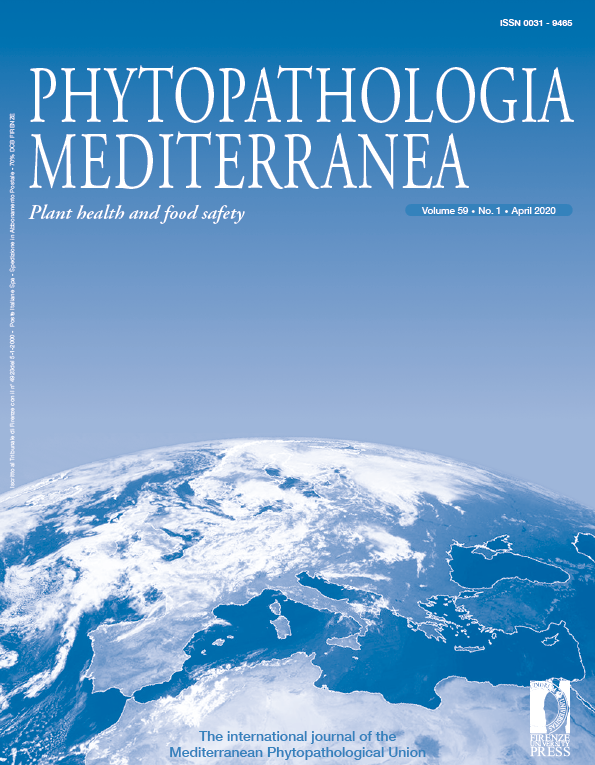Published 2020-03-31
Keywords
- Alternaria section,
- Alternaria arborescens,
- Alternaria mali,
- Alternaria mycotoxins
How to Cite
Abstract
Cakile maritima is a typical halophyte of the Mediterranean coasts. In addition to its ecological and industrial properties, C. maritima has antiscorbutic, diuretic and purgative roles in folk remedies. This plant is infected by different fungal species, mainly belonging to Alternaria genus. Two-hundred Alternaria strains were collected from four different pedo-climatic areas in Tunisia, from C. maritima fresh plant tissues showing symptoms of Alternaria infection. Phylogenetic analyses of 79 representative Alternaria strains, were carried out using multi-locus gene sequencing. All the strains clustered in the Alternaria Section: 47 strains had high homology with A. alternata reference strain, 13 grouped with A. arborescens reference strain, 12 grouped with A. mali reference strain, and seven strains were not well defined with A. mali as their closest species. In vitro production of tenuazonic acid (TA), alternariol (AOH), alternariol-monomethyl ether (AME), and altenuene (ALT) was evaluated. Approx. 68% of strains simultaneously produced AOH, AME and TA. Only two A. alternata and one A. mali strains were ALT producing. Pathogenicity tests on leaves of C. maritima were carried out with 41 representative strains. Alternaria arborescens showed the greatest pathogenicity compared to A. alternata and A. mali, although no statistically significant differences in pathogenicity were observed. This is the first study on Tunisian populations of Alternaria species isolated from the extremophile C. maritima.






